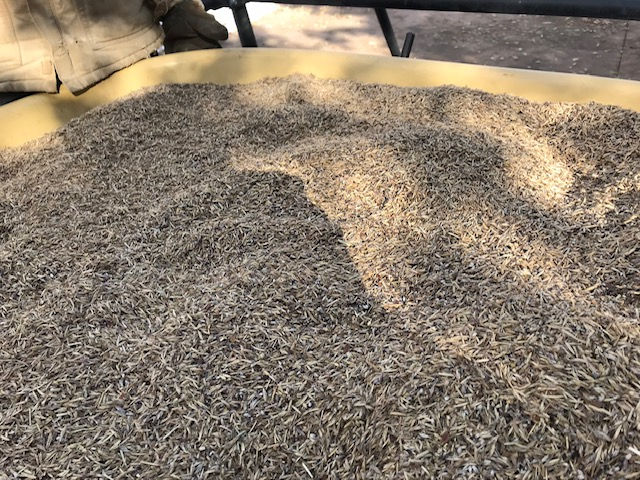First Snow and Wacouta Prairie Restoration Begins
- Bruce Ause
- Nov 18, 2019
- 3 min read

First Dusting of Snow
I woke up the morning of October 29th to a dusting of our first snow of the season. It would turn out to provide an opportunity for some interesting photos. A hike on the trails on Rattlesnake Bluff would be in order. On the north (lake) side of the bluff are many sugar maple trees some of which were still retaining their leaves. With a stiff southeast breeze, many of the maple leaves were fluttering down around me.

Snow Covered Big-Toothed Aspen Leaves
Along the edge of the forest where more sunlight is available, one can find other species of trees. The most common of those trees are quaking and big-toothed aspen. These trees tend to drop their leaves much earlier than others.

Virgin's Bower Flowers
One of the most interesting and unique observations this morning was the snow covered female flowers of the Virgin's Bower (Clematis virginiana). This vine capable of twenty feet in length is native to North America and is sometimes called "devil's hair."

Oak Covered Hillsides
On the south side of Rattlesnake Bluff, it is more common to observe native red and white oak. Bur oak, a member of the white oak family, is especially resistant to fire. Before the arrival of European settlers, fires were common in the blufflands. There are several oaks in this area 200 plus years of age. This photo captures a view overlooking Hill Ave. Notice all the oaks which still have their leaves.

Prairie Restoration Excavation
The first step in the Wacouta prairie restoration took place on Saturday October 26th. At the far east end of the prairie is a low spot that has historically produced very poor crops because of it's tendency to stay wet. This part of the restoration work was to remove some of the better heavy soil that has been washed downhill over many years of cultivation and spread it over surrounding areas of poor sandy conditions.. The resulting low area should now provide an opportunity for more diverse prairie flora.

Seeding Prairie Area
According to Haley Golz, restoration program manager for the Minnesota Land Trust, the unexpected early arrival of winter weather really disrupted plans for working up and seeding the prairie. The original plans called for this work to begin on Wednesday November 6th. Unfortunately during the night of November 5th, we received 3 inches of wet heavy snow followed by abnormally cold temperatures. With the ground starting to freeze, they had to switch to plan B. This involved spreading the seeds over the top of the snow.

Prairie Seeds Photo Credit: Haley Golz
The seed mix included 100 different species of grasses and forbs.

Prairie Seeding Photo Credit: Haley Golz
Haley explains, " Instead of tilling, seeding and packing like we had planned it turned out that we had perfect conditions for a snow seeding. With this method, you essentially broadcast the seed over the snow. The seeds stuck in the snow extremely well, and with the sun they melted right in. The snow was actually amazing for making sure we were getting an even spread on the field. I could tell exactly how the contractor was laying down the seed and he could adjust his spacing based on any wind effects. Shortly after seeding, the area received a little rain and continued to melt the snow, driving the seeds to the surface of the soil. Any frost heaves during the winter will work the seeds into the soil just the right amount."

Backyard Bird Feeding
After a recent successful deer harvest and butchering session, I secured some of the scraps in our backyard apple tree. In less that two minutes, no less that six crows came in to take advantage of the situation.
A cougar captured on a security camera on November 7 at the Head of Lake Pepin at Presbyterian Point. Credit should go to Ross Haroldson.




Comments